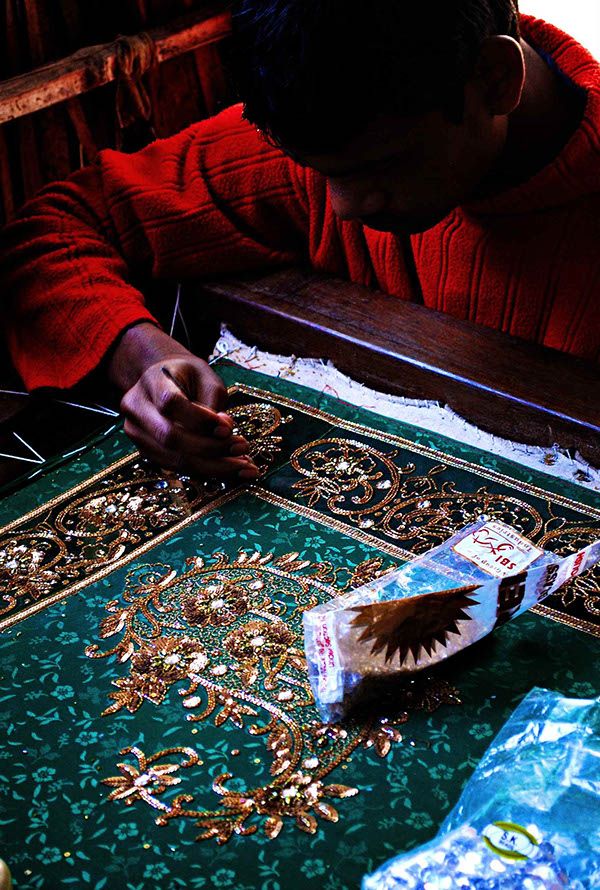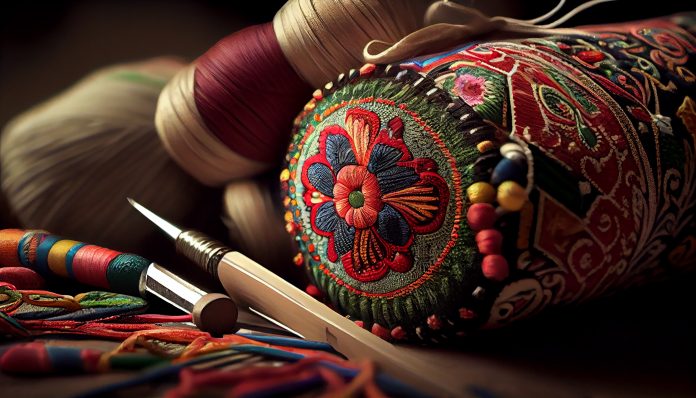The enchanting world of Indian hand embroidery is like stepping into a world where centuries-old tradition dances with vibrant ingenuity. A rich tapestry of culture and artistry is woven together by the tiny stitches, each of which narrates a tale passed down through generations. Indian embroidery is more than just a textile tradition—from the point of the needle to the explosion of color—it is a living legacy that is treasured and honoured. Each Indian hand embroidery technique uses distinct stitches and colors that reflect the country’s cultural and artistic diversity, with styles differing according to landscapes.
Aari Hand Embroidery
The Gujarati hand embroidery known as “Aari” embroidery gets its name from the special needle used in it, known as a “aari,” which is made of a sharp, hooked design. The technique of Aari embroidery is what makes it so fascinating; skilled weavers create complex chain stitches and occasionally add beads and sequins to enhance the design, creating beautiful garments. The exquisite details of Aari embroidery, which is widely used in the fashion industry, especially to create bridal gowns and lehengas, perfectly capture its essence. In addition, the use of moti, beads, kundans, and sequins enhances the beauty of the final garments.
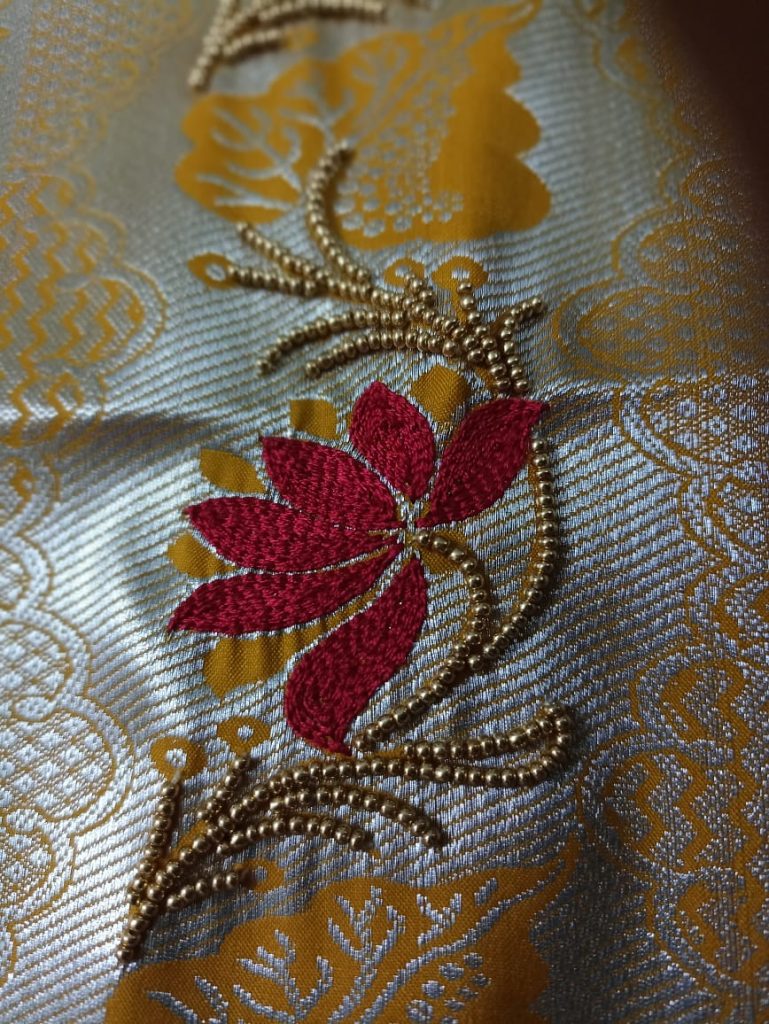
Banjara Hand Embroidery
Indian hand embroidery, which is highly sought after by the nomadic Banjara tribes, is an artistic form that has travelled far and wide and influenced many locations with its distinct style. These Banjara tribes travelled and shared their needlework skills, inspiring various regions to create their own patterns and techniques. Starting with a canvas made of vividly colored fabrics, craftspeople use cross-stitches to create geometric shapes like triangles and squares, as well as complex chain stitches and a unique quilting stitch to create eye-catching patterns. Mirrors and beads are frequently added to the embroidery to enhance its allure and lift the work to a truly enchanting level of craftsmanship.
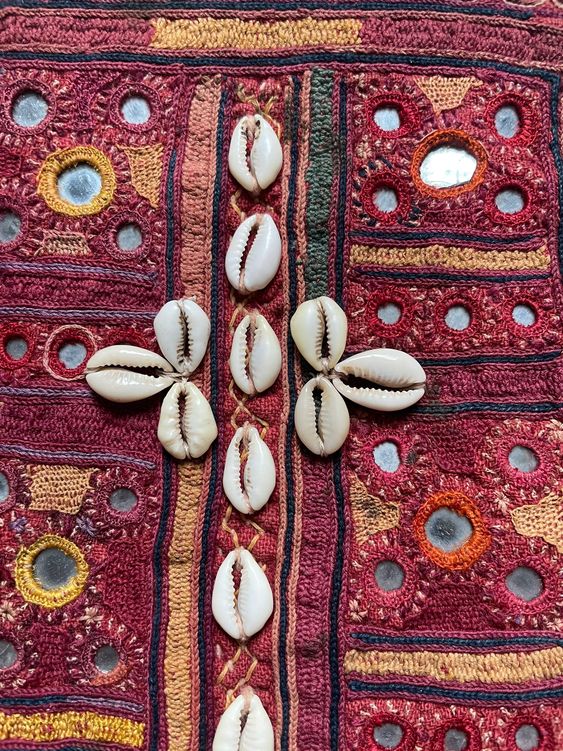
Chikankari Hand Embroidery
Chikankari embroidery is an ancient craft that originated in Lucknow, Uttar Pradesh, in North India. It is thought to have been brought to the region by the empress Nur Jehan. Chikankari, which is well-known for its elaborate white-on-white details, is a testament to exquisite craftsmanship, delicately adding floral motifs to fabrics like organza, cotton, and silk. To accommodate the intricate stitching process, the fabric used for this type of Indian hand embroidery needs to be soft and delicate. Every Chikankari piece is the result of several artisans working together to contribute their skills to various embroidery stages. The labor-intensive technique can involve up to 35 different stitches, including flat, raised, and embossed stitches. These, along with intricate ‘jaalis,’ create a mesmerizing tapestry of texture and design. Specialized embroiderers focus on specific stitches, while artisans skillfully craft ‘jaalis’.
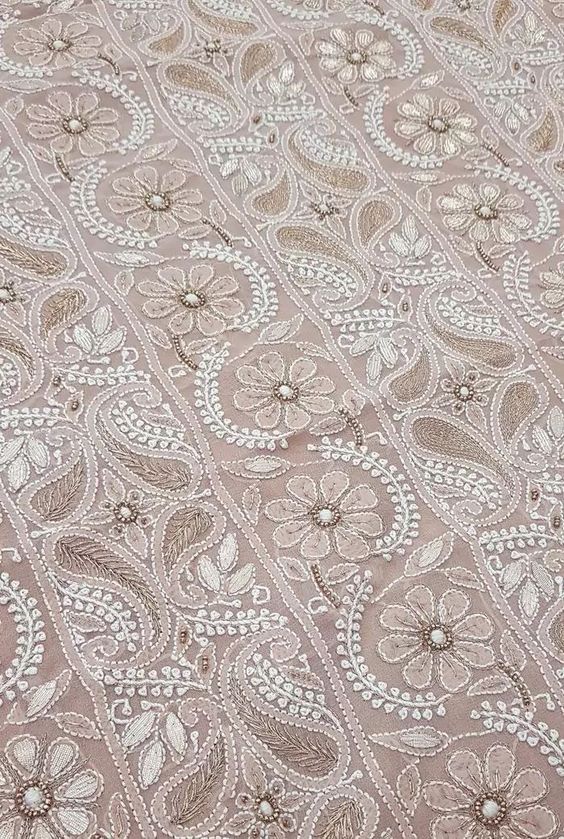
Gota Patti Embroidery
Gota embroidery, originally from Rajasthan, intricately weaves special threads sourced from Lucknow to create stunning patterns on fabric. Usually, this embroidery method makes use of different-length gold and silver wires that are deftly woven into bandhani or georgette textiles. The finished, painstakingly crafted Gota is then sewn onto the fabric, giving the outfit a dash of opulence and elegance. Brides often choose Gota embellishments for their special day because of their surprisingly lightweight design, despite their elaborate appearance. Gota embroidery is widely available in a multitude of hues and materials, and it embellishes a wide range of clothing items, such as lehengas, suits, sarees, and blouses, to lend a touch of sophistication and traditional charm.
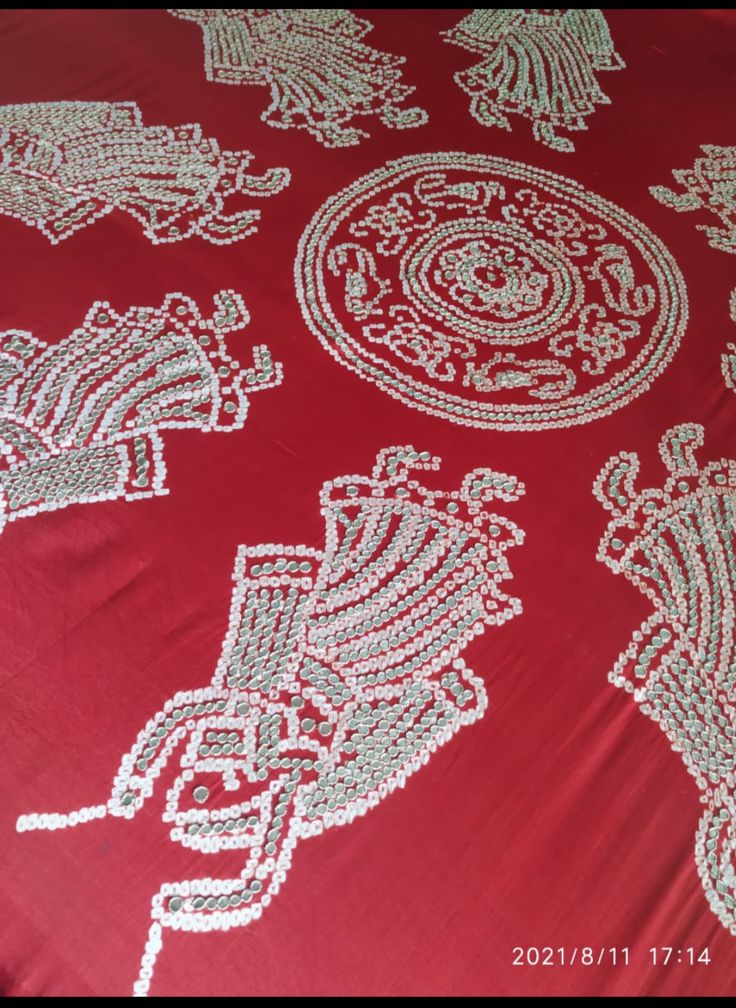
Kantha Embroidery
Renowned for its simplicity and elegance, the Kantha stitch originated in West Bengal and spread to Odisha, Tripura, and even Bangladesh. Kantha embroidery, also known as dorukha, is primarily done by traditional women in these areas. It is distinguished by its reversible design, which looks the same from the front and back. Kantha stitch’s attractiveness is enhanced by its painstaking neatness, which results in an appealing appearance. Kantha embroidery is popular for a wide range of clothing and home accessories, such as sarees, blankets, bedsheets, pillowcases, dupattas, shirts, and more. Despite its intricate detailing, kantha stitching adds no weight to the fabric, maintaining its lightweight appearance.
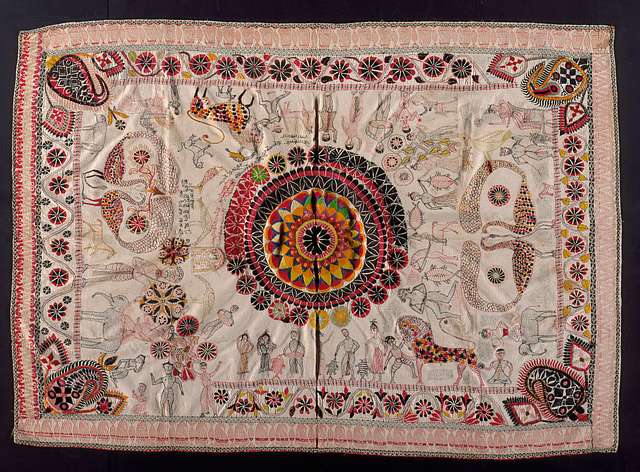
Kashida Embroidery
Craftspeople in the area cherish the Kashida embroidery tradition, which is becoming increasingly popular throughout India and equally captivating as the Kashmiri landscape. Luxurious and vibrant thread colors are used to create exquisite pieces of fabric that subtly improve your whole look. Kashida embroidery is primarily used to embellish shawls, bedsheets, odhani, saree pallus, borders, scarves, and other home furnishings. Its elaborate floral motifs produce enthralling patterns. Kashida items are highly popular in women’s clothing and offer a sophisticated touch, especially during the winter season.

Kasuti Embroidery
Karnataka is the birthplace of Kasuti embroidery, which is notable for its exquisite workmanship and geometric accuracy. This geometric pattern-inspired embroidery style is dramatic and intriguing, drawing the viewer in with its intricate details. Unlike other embroidery techniques, Kasuti incorporates a hint of natural beauty into its designs by frequently drawing inspiration from fauna motifs rather than following a set pattern. Carefully counting threads is a tedious but necessary step in the stitching process. In addition, Kasuti embroidery is done without knots, which poses additional difficulty for artists. Nevertheless, despite these difficulties, Kasuti embroidery produces exquisite results, adorning clothing with unmatched beauty and elegance on kurtas, dupatta borders, jackets, and more.
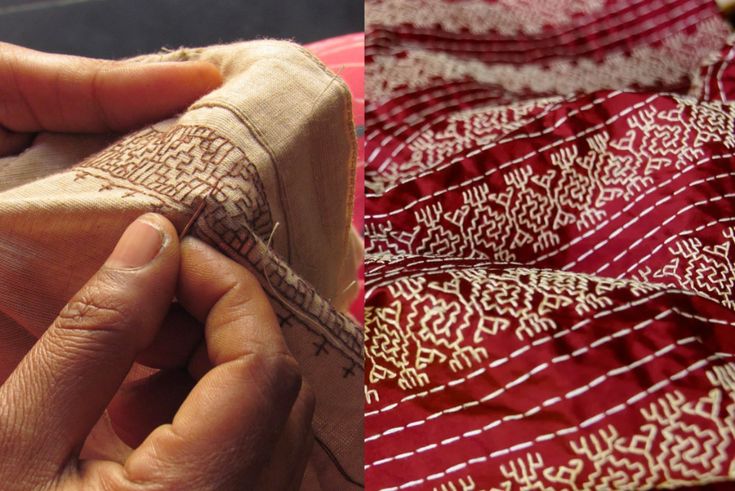
Phulkari Embroidery
Phulkari embroidery, which is Punjabi in origin, reflects the color and dynamism of its native region. Using multicolored threads, Phulkari creates an eye-catching, compelling appearance that is hard to ignore. To achieve the best results, this Indian hand embroidery is usually done on a base fabric that has undergone careful preparation. The distinctive quality of Phulkari is its stitching method, which is primarily done on the back of the cloth, leaving no visible spaces between the finished design and the front. Phulkari embroidery is traditionally a community project, typically completed by groups of local women. Although Khaddar remains the preferred fabric in traditional designs, Phulkari is now used to adorn a wide range of textiles, such as cotton, chiffon, and more, demonstrating its timeless appeal and versatility.
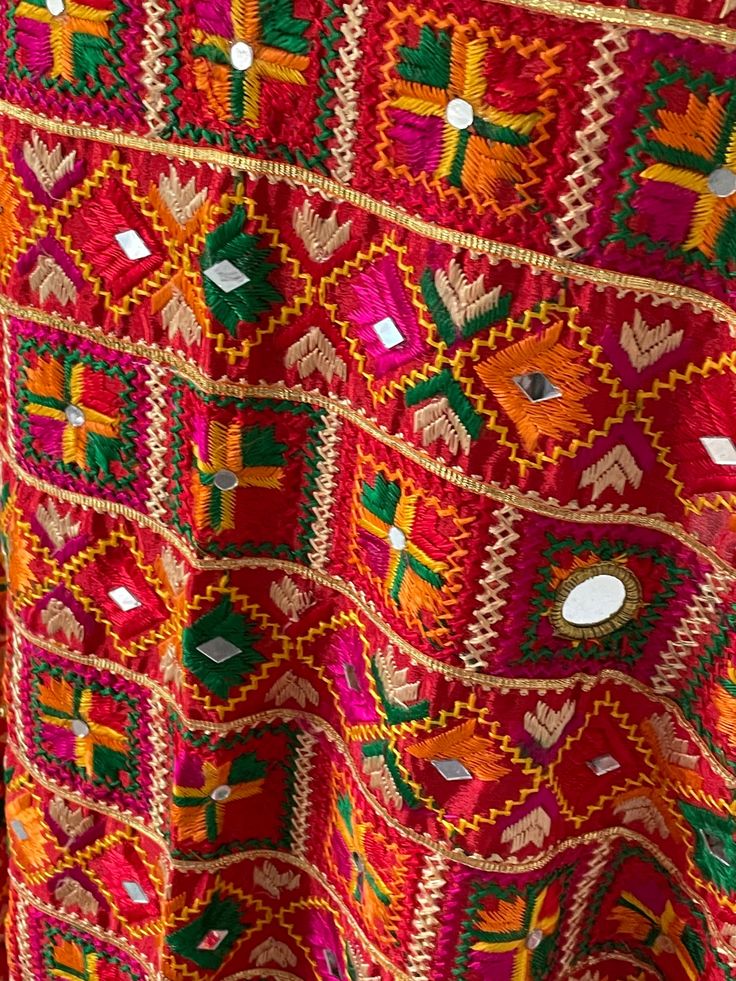
Zardozi Embroidery
Zardosi embroidery, which dates back to the 16th century during the Mughal era, is considered the height of opulence and grandeur. The name “Zardosi,” which has Persian origins, combines the words “zari,” which means gold, and “dosi,” which means embroidery, alluding to the elaborate use of gleaming golden and silvery threads. The most opulent textiles of the day, such as pure velvet and silk, which were reserved only for the royal class, allowed this embroidery artistry to flourish. Real precious stones and pearls were frequently used by Zardosi artisans to adorn their creations, adding a stunning touch of luxury and heightening their allure. Each Zardosi embroidery piece embodies a royal grace fit for historical kings and queens, transforming fabric into a work of art worthy of hanging in a mahal’s halls.
